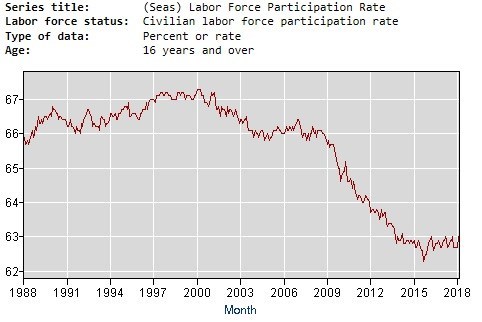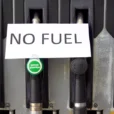We shouldn’t expect the labor participation rate to be 100 percent, or even near it, but the downward trend is worrying.
There is a lot of good news about the job market in America.
The official unemployment rate, released just yesterday, is down to 4.1 percent, which is the lowest it’s been since the end of the Clinton years. Even more impressive, the number of people getting unemployment benefits (i.e., getting paid not to work) has dropped to the lowest level since the early 1970s.
I don’t want to rain on this parade, but the numbers aren’t as good as they seem.
Labor Force Participation
Back during the Obama years, I repeatedly pointed out the real health of the labor market should be measured by looking at either the rate of labor force participation or the employment-population ratio.
These are the numbers that give us a more accurate picture of the extent to which labor is being productively utilized (remember, national income is determined by the quality and quantity of labor and capital in the economy).
So let’s dig into the government’s database on labor force statistics and see where we stand when examining these more-insightful numbers.
We’ll start with the data on the rate of labor force participation, which is basically a measure of those working and looking for work as a share of the adult population. As you can see, that rate dropped significantly at the end of the Bush years/beginning of the Obama years. And it hasn’t recovered even though the recession ended back in 2009.

By the way, we shouldn’t expect this rate to be 100 percent, or even anywhere close to that high. After all, the 16-and-up population includes plenty of full-time students, retired people, disabled, stay-at-home moms (or dads), and others.
But I worry about the downward trend.
Employment-Population Ratio
Now let’s look at the employment-population ratio, which is slightly more encouraging. We see a precipitous drop during the recession, but at least the number has been trending in the right direction for several years.

















No Comments